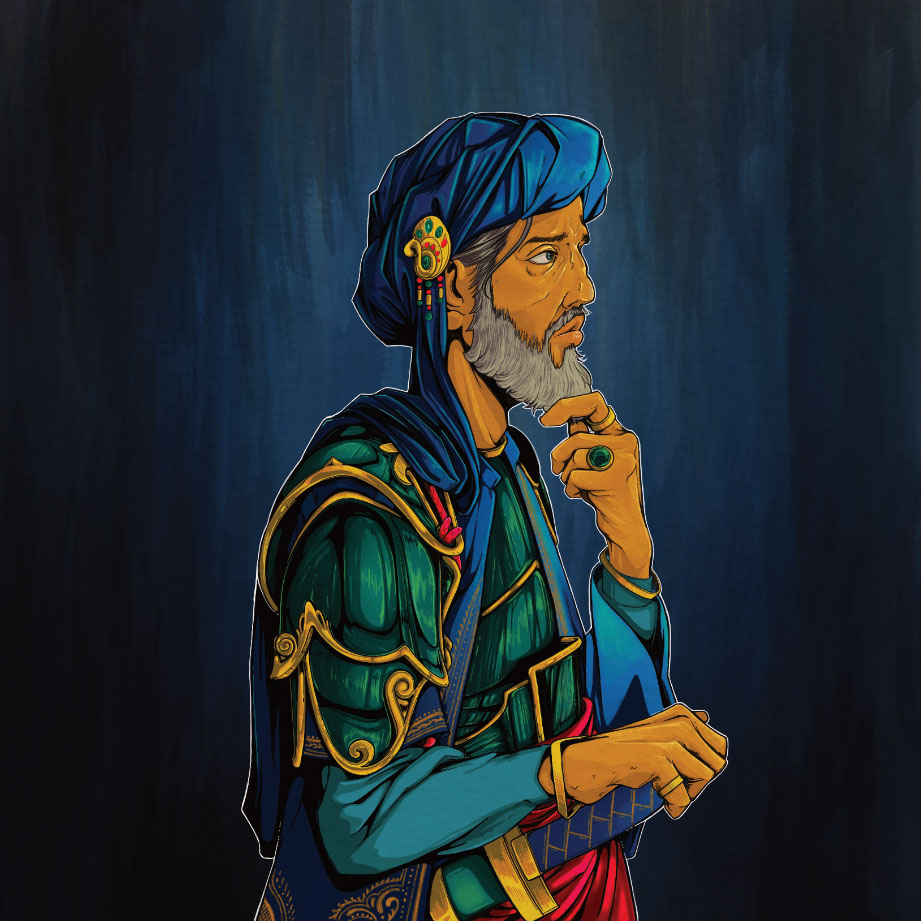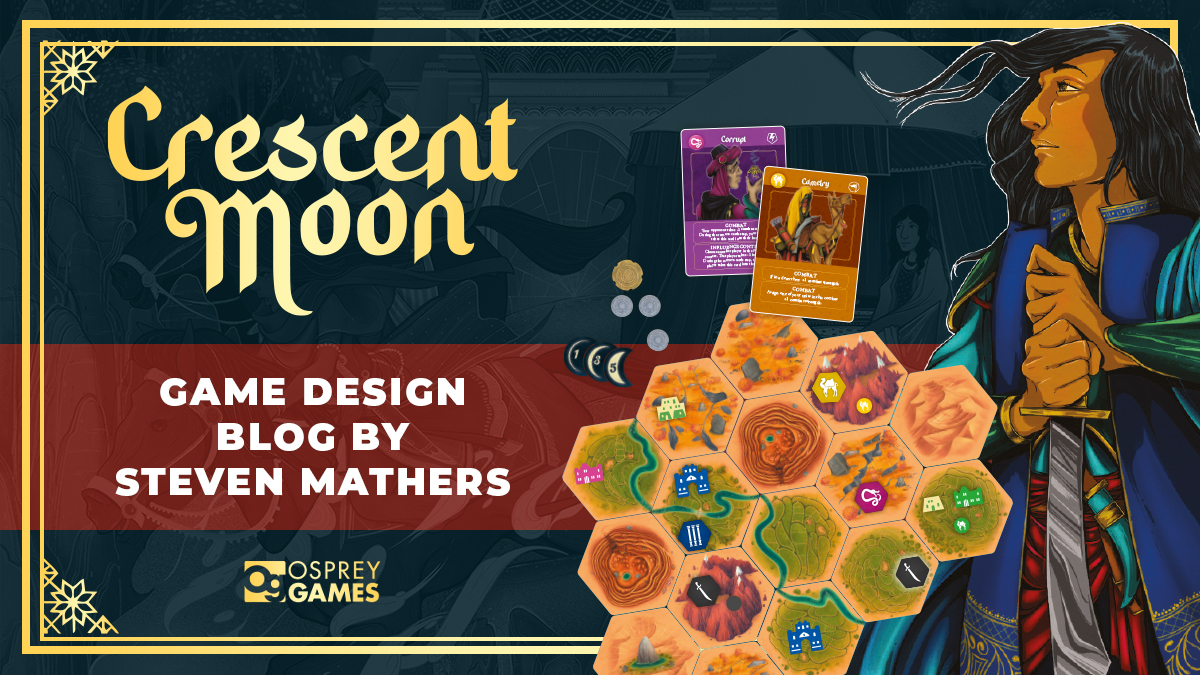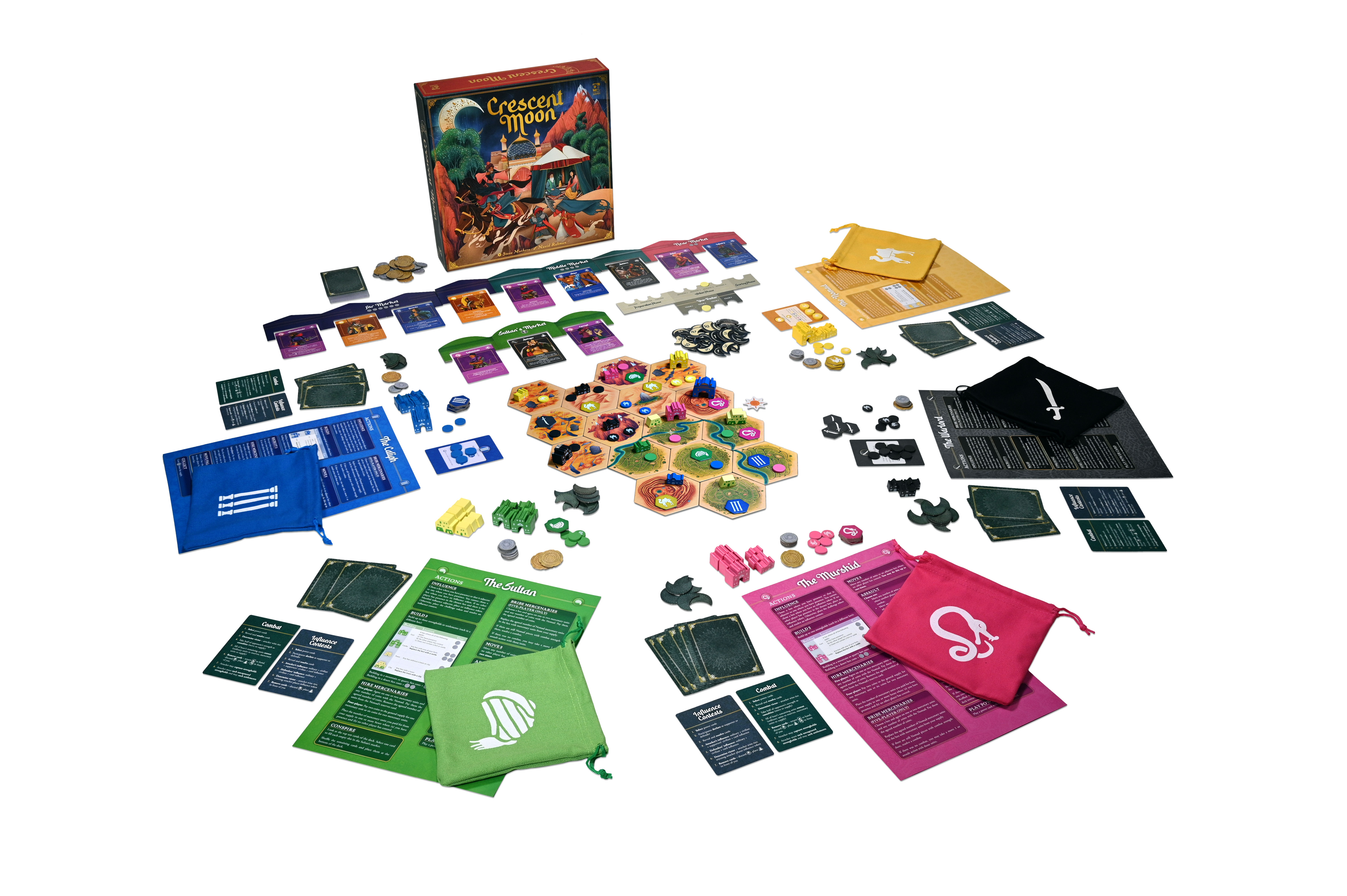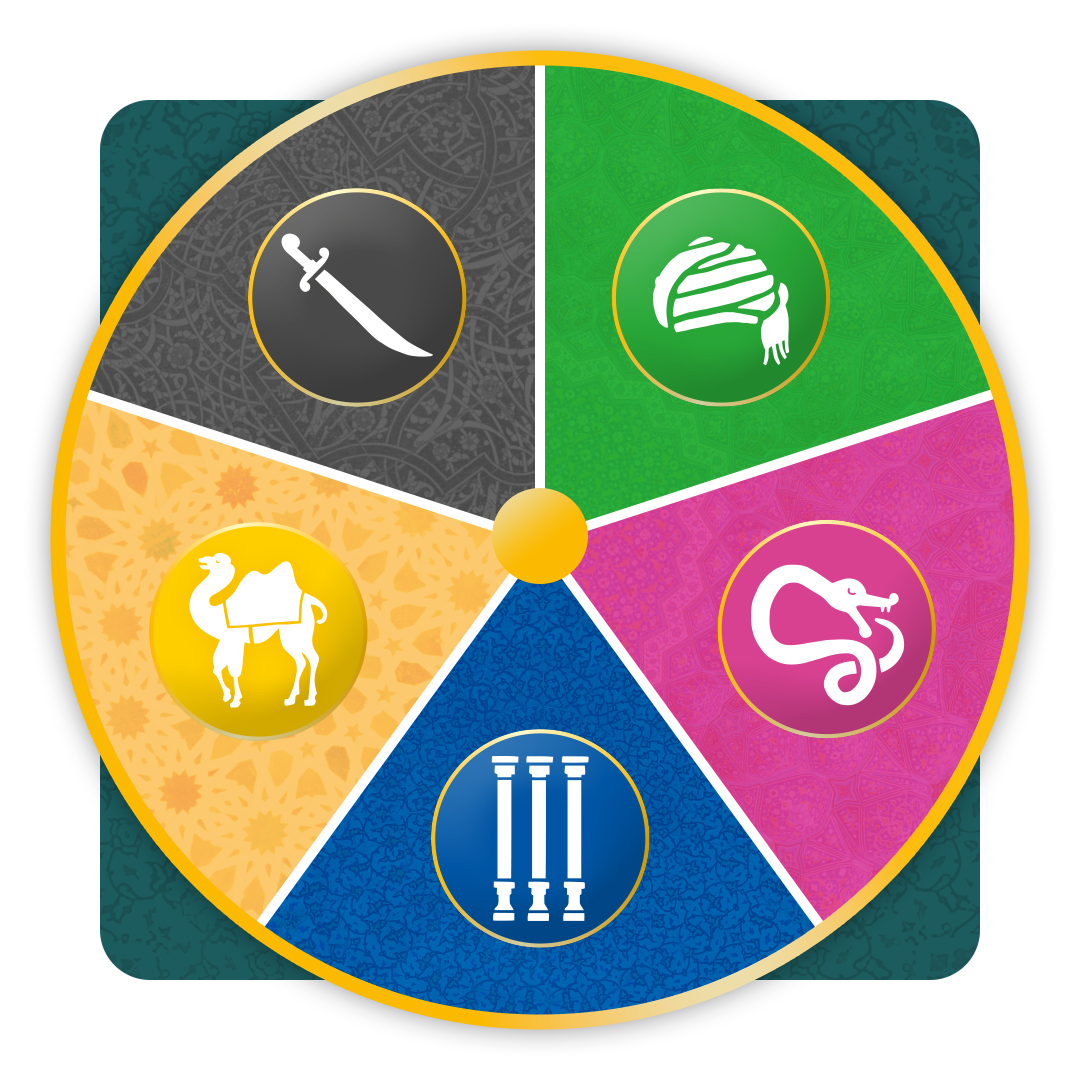
This May will see the release of Crescent Moon, an asymmetric area control game for 4-5 players. We spoke to the designer himself, Steve Mathers, to find out more about how he took the game from just an idea and onto the table ...
In 2016, I played Chaos in the Old Word, which is an area control game where players represent evil space gods, each with their own asymmetrical faction. What struck me was that, although all the factions had different powers, three of the factions had basically the same agenda - drop corruption in various areas for various reasons – and were thus more or less interchangeable. The 4th faction however had a completely different role - it won the game by killing the units of the other factions. Without this faction, the whole game would play differently.
Crescent Moon started as a thought experiment - what if I made a game where every faction had different agendas, and every faction was somehow structural to the game?
The Factions
I started out with the Warlord, which is basically equivalent to the killing faction in Chaos in the Old World. Then, naturally, if you have an area control game, the agenda of one of the factions should be controlling areas - the Caliphate. These two were the easy ones. The others did not come so quickly.
Sometimes, when looking for inspiration at an early stage of the design process, it helps to consider theme and setting, even for someone like me that generally comes up with ‘game feel’ and mechanics first. As I was searching for inspiration for my third and fourth faction, I considered various themes, one of which was the Crusades. Peasant armies, knightly orders, Islamic states, and assassin cults — there was a lot going on! It didn't quite work out, but the idea of an assassin cult faction (now called the Murshid) that competed not by warfare but by stealth and influence was one I was sure I wanted to include, along with all factions fighting for control over a ‘Holy Site’.
Having a faction that pursued influence added that mechanic to the game. It became not just an area control game, but also an area influence game. Each faction could compete in either arena, with one being more important to some than others. This led me to consider what other arenas of competition could there be. Surely it had to be ‘economic’? This led to the creation of the Sultans - the rich faction. Now I had four factions - was it enough?
Another of my favourite games featuring asymmetric factions is Dune or its re-theme Rex: Final days of an Empire. The thing I really loved about Dune was that some factions were reliant on the others in some way, and in many cases, there was a cost/benefit trade-off when performing certain actions because helping yourself would help those other factions. I really wanted to introduce this concept into my own game - interdependent factions where actions have some kind of benefit for other factions. This idea helped flesh out the various objectives and powers of the existing factions, and led to the creation of the last faction - the Nomads. They hire out their own units to other players for cash. And they can use cash directly to get victory points - reliance and consequence.
So now the web of reliance and consequence plays out as a kind of closed ecosystem:
The Sultans provide the economy by generating wealth and requiring services.
The Caliphate provides protection through military control of areas, allowing other factions to prosper in its shade.
The Warlord provides the necessary threat to keep the situation always fraught with danger.
The Murshid is the main competitor in the influence arena, but as every faction has its own use for area influence, it must struggle against all. However, its influence allows it to sway contests between other factions - a powerful bargaining chip.
Lastly the Nomads with their mercenaries are invaluable and influential in their own way, but must balance a need to hire their units to generate their main source of victory points, with pursuing their own independent goals.
However, the structural nature of each faction does come at a price – it is very hard to reduce the player count of a game where each faction provides a necessary part of the ecosystem.
Balance
Balancing this game has been hard. Making sure that each faction has an equal chance to win by pursuing their own aims, when each faction has been designed to be interdependent, is a bit of a nightmare, to be honest. One faction being a bit stronger or weaker has direct consequences for other factions, drastically changing the whole complexion of the game. That's a good thing if the strength or weakness arises organically from play - it means that games can have a very different feel from one play to the next. But it’s a bad thing if the strength/weakness is baked in from the start.
My goal was to give each faction an equal chance to win without players having to recognise from the start that one faction is intrinsically more powerful and must be ganged-up on. To be clear. I think that can be an interesting dynamic to have in a game, but I think to purposely pursue that, the powerful faction needs to be obviously much more powerful than the rest, and not just 'somewhat' more powerful. That’s not what I’m aiming for with this game.
For instance, if the Warlord is too strong then everything gets destroyed and the economy of the game stagnates, but if the Warlord is too weak or isolated, then the Sultan and to a lesser extent the Caliphate prosper in the extended peace to an undue extent and some military tension leaks out of the game. As the main obstacle to the Warlord running rampant is the Caliphate, these two must be delicately balanced. This is largely a military balance, where the military strength of the Warlord's numbers must be balanced against the Caliphate's fortifications and unit upgrades. In isolation, this is fairly achievable over time.
The solution is not so much straight increase/decrease in strength of factions in isolation, but tweaking each faction’s goals so that they are more/less inclined to direct conflict or alliances. So the balancing process has been long and involved, fine-tuning military cards and rules, and modifying the objectives of each faction to get the desired thematic feel and dynamics between them all.
Osprey on board
Crescent Moon has been in development for a loooong time. The first play tests occurred back in 2016. The placeholder artwork for these playtests largely consisted of pieces from the Osprey ‘Men at Arms’ series of books, most of those inked by the incredible Angus McBride. My bookshelf has many of these books from my tabletop wargaming days. It wasn’t until much later that Osprey Games officially took on the project, but somehow the Osprey link was there all along.
One of the first things Osprey focused on was the game length, which originally clocked in at five rounds. We came up with an accelerated setup to the game (placing more pieces, and starting with some cards in hand) that allowed the number of rounds to be trimmed.
Next, they brought in Navid to do the artwork in an authentic style that is a real point of difference. I love the box art in particular.
Finally, Osprey made the smart decision to hire a consultant to make sure the cultural aspects of the game were on point. For example, the placeholder icon for the Sultan faction in the prototype featured some beautiful looking Islamic calligraphy that I chose because it had a pleasing circular shape. What I didn't know is that I had selected a Bismillah which has religious significance that made it inappropriate to use.
Publishing through the pandemic probably extended the release date of the game by about a year to accommodate the extended lead times on production and freight, but finally the game is about to hit the shelves. A big thanks to Anthony, Filip and the rest of the gang to make this possible!
I'd also like to take the opportunity to thank some very supportive friends whose many hours of playtesting and valuable advice helped shape the game over the years: Adrian, Chris, Jack, Kim, Matt and Nick in particular were invaluable. Thank you!
Crescent Moon is out May 26th and available to preorder today.





Comments
You must be logged in to comment on this post. Click here to log in.
Submit your comment